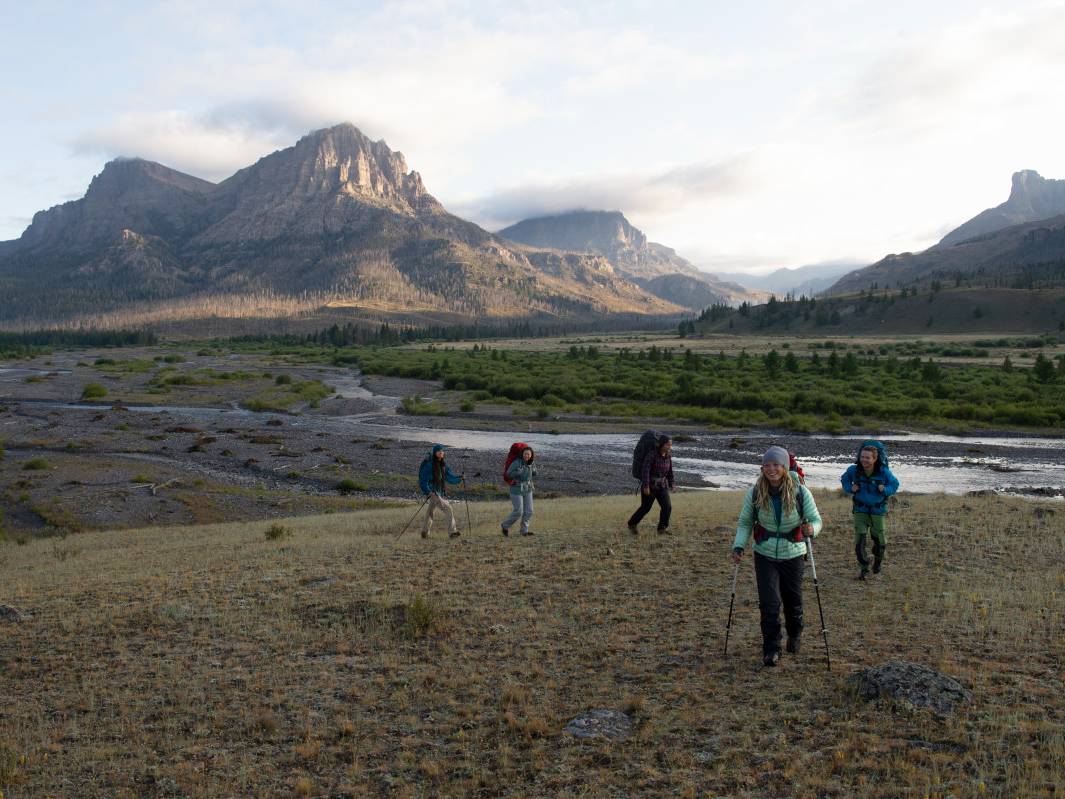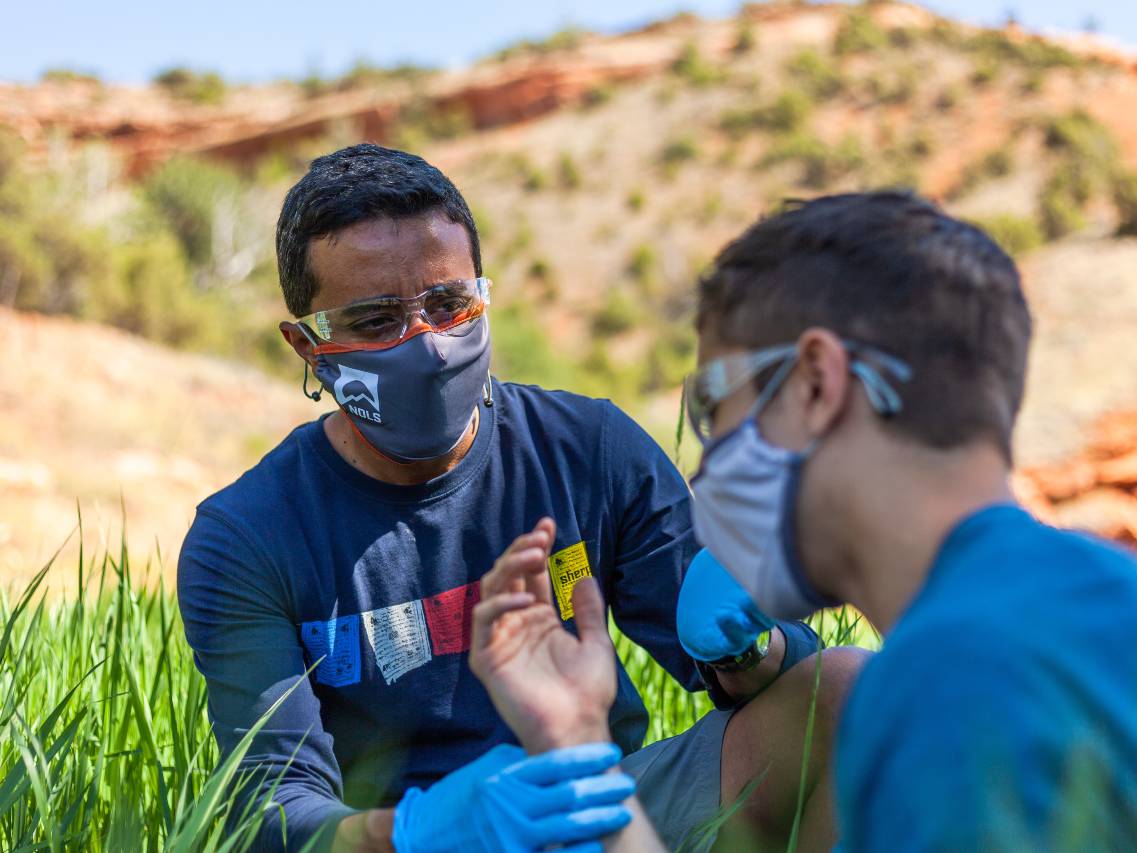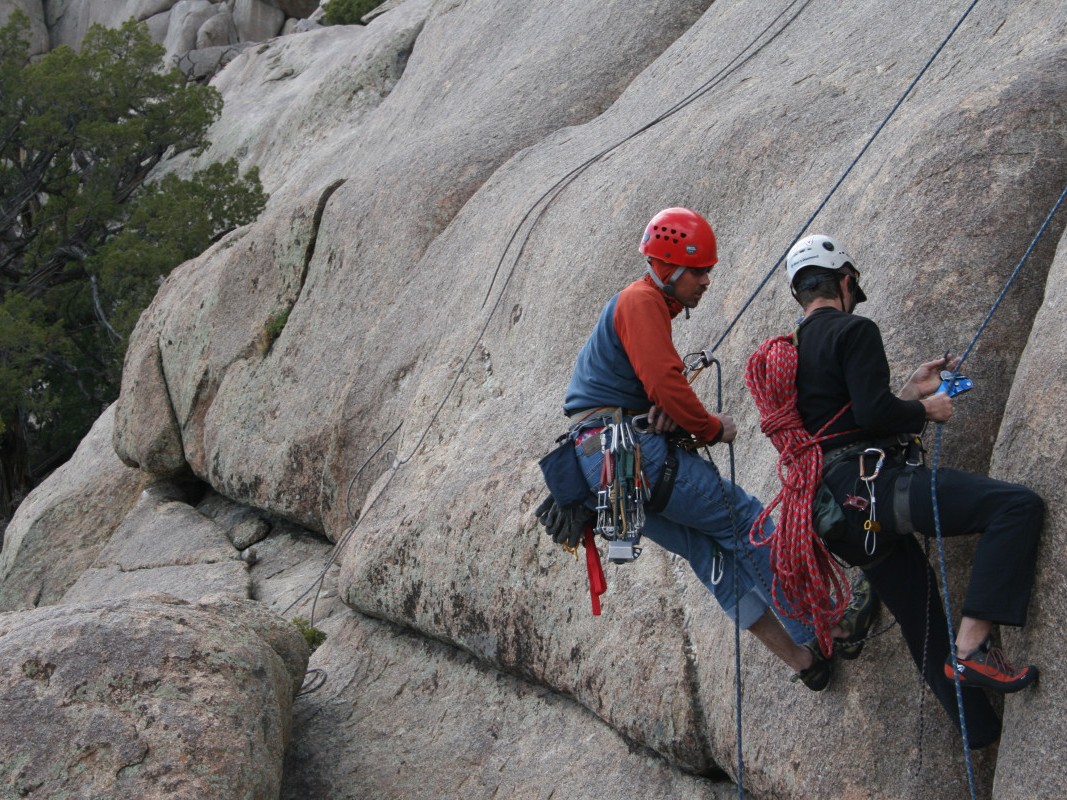
The Setting
It’s a beautiful, clear, warm summer day in the Absaroka Range on the east side of Yellowstone National Park. You’re lagging 15 minutes behind a group of 7 teenagers participating on a weeklong backpacking trip as part of a summer camp. The wildflowers are in full bloom, and the vistas down the drainage are magnificent.
Even though you’re patiently shepherding a participant who is walking very, very slowly, you’re thinking that this is the best job in the world. You’ve been walking up a steep and long hill, and you expected the participants to be challenged by the effort, but it does surprise you to see them stopped in the middle of trail at the high point of the climb (9,000’).
One member of the group, Shawn, is kneeling; another turns to you and says that Shawn can’t breathe and has HAPE.
SOAP Report
Subjective
The patent is a 16-year-old male who says “I can’t breathe.” Another member of his group says he started to wheeze and suddenly sat down on the trail about 10 minutes before our arrival.
Objective
Patient was found kneeling in a tripod position. He is obviously working hard at breathing. He denies falling or hitting his head. Patient appears anxious and is fumbling with an inhaler.
Patient Exam
A head to toe exam does not reveal any injury. Patient’s respiratory rate is rapid with audible wheezes when he exhales. He speaks in short sentences. No accessory muscle use. No gurgling noises. He has tingling in his hands, no cramping of the hands or feet. Patient denies chest pain, headache, nausea and dizziness. He only complains of a tight chest and states, “This is like my asthma.”
Vital Signs
|
Time |
1000 hrs |
|
Level of responsiveness |
A+Ox4 |
|
Heart rate |
90, strong, regular |
|
Respiratory rate |
30, shallow, regular |
|
Skin color, temp, moisture |
Pink mucous membranes, skin cool, clammy |
|
Blood pressure |
Radial pulse present |
|
Pupils |
PERRL |
|
Temperature |
Not taken |
History
Symptoms |
Chief Complaint is shortness of breath: Onset 10-20 minutes ago Provoked by exertion? pollen? Quality is "feels like my asthma" Region is chest/lungs Severity is: patient can speak in sentences, is in tripod position working to breath, mental status is alert and anxious, skin is cool and clammy, RR is 30/minute Time is 10-20 minutes with no improvement. |
|
Allergies |
Pollen, dust and dander allergies. Usually this causes hay fever S/S but can provoke patient’s asthma. |
|
Medications |
Patient has an Albuterol inhaler. Occasionally takes Claritin for allergies but denies taking this recently, or taking any other OTC, herbal or recreational meds. |
|
Pertinent Hx |
Asthma for past 2 years. Occasional episodes during the spring at home that are resolved with his inhaler. No exacerbations on this trip. Patient denies emergency room visits or hospitalization for his asthma. Patient states he has been feeling fine until he "ran out of air" on this hill. He denies having a treatment plan. |
|
Last in/out |
Patient ate breakfast, drank 1 liter of water so far today. Normal urine this AM. No bowel movement today. |
|
Events |
Patient was hiking a steep hill and became short of breath. Denies recent illness or shortness of breath prior to this episode. |
Stop Reading!
What is your assessment and plan? Take a few minutes to figure out your own assessment and make a plan. Don’t cheat—no reading on without answering this first!

Assessment
- Patient may be experiencing an asthma episode.
- There is no mechanism for injury.
- Possible problems include hyperventilation and/or other respiratory problem.
Plan
- Calm the patient and try to slow his RR to avoid hyperventilation. Assist his inhaler use.
- Consider whether an environmental trigger is present, and if so, get away from it.
- Treat the shortness of breath with the patient’s Albuterol inhaler at 2 puffs every 4 hours (the protocol printed on the side of the inhaler).
- If the patient’s shortness of breath resolves we will continue the trip and keep a close watch on the patient. Further episodes, or an episode that does not abate with his medication, may warrant evacuation.
Anticipated problems
- Patient may have repeated episodes, or a severe asthma attack.
- Patient may develop high altitude pulmonary edema or hyperventilation.
Comments
Asthma is a lung disease characterized by narrowing of the airways, increase in mucus production, and bronchial edema. It can have symptoms triggered by an allergic reaction to inhaled allergens, or it may be non-allergic asthma triggered by stress, anxiety, cold air, exercise or other factors.
There are other chronic lung diseases, such as emphysema and bronchitis, in which the breathing impairment is persistent because of destruction of lung tissue and chronic inflammation. Asthma is usually a reversible condition. The airway narrowing can improve spontaneously or in response to medication. A prolonged, severe asthma attack that is not relieved by treatment is an emergency requiring rapid transport.
Signs and Symptoms of Asthma
Signs and symptoms of mild to moderate asthma are wheezing, chest tightness, and shortness of breath. The heart and breathing rates are increased. When asthma becomes severe, the patient may be hunched over, bracing the upper body and working to breathe. The patient may be able to speak only in one- or two-word clusters. Lung sounds may be diminished or absent. If the patient becomes sleepy or too fatigued to breathe, the situation is dire.
Signs and Symptoms of Mild to Moderate Asthma
- Chest tightness
- Wheezing and coughing
- Shortness of breath
- Increased heart and breathing rates
- Increased mucous production
- Fatigue
Signs and Symptoms of Severe Asthma
- Use of accessory muscles to breathe
- Decreasing breath sounds progressing to absence of sounds
- Speaking in one- to two-word clusters
- Sleepiness
- Cyanosis
Treatment
Treatment principles include:
- Calming the patient
- Using bronchodilators (i.e. Albuterol)
- Hydration and rest
- Possibly changing the environment if local conditioning are aggravating the condition (i.e. camping in a forest with obvious airborne pine pollen).
Usually, this patient treats their asthma by self-administering medication, commonly a bronchodilator (Albuterol), with an inhaler. Find out the treatment plan their physician has advised, usually the standard dosing, and assist the patient in meeting the plan.
You may need to help the patient relax and use the inhaler properly: shake it first, use a spacer, hold it in the mouth, exhale, and then depress the device and inhale the mist deeply, holding the breath for 5 to 10 seconds before exhaling. The second dose is usually administered one to two minutes later. You may need to encourage the patient to trust the medication and not abandon it prematurely.
To stabilize the initial exacerbation, aggressive use of the patient’s inhaler (3, 4, or 5 treatments) might be needed. Warm, humidified air can help relax airways and clear mucus.
Severe asthma episodes may require medications (epinephrine and steroids) usually not available in the wilderness, and such patients should be evacuated promptly.
If you’re outside the U.S., you may see other treatment recommendations for asthma. For example, the Australian Resuscitation Council recommends that if there is no improvement with initial inhaler use, then initiate the 4x4x4 technique:
- Four puffs, four minutes, four puffs. Sit patient upright in a comfortable position and be calm and reassuring. Give 4 puffs (with 4 breaths in between each puff) of reliever medication through a spacer. Use patient’s own inhaler if possible. Wait 4 minutes, if no improvement, initiate your evacuation plan whilst adhering to the 4x4x4 technique.
Evacuation Guidelines
NOLS recommends evacuating any patient who is not improving with use of their medications or who is having episodes of increasing frequency or duration.
End of the Tale…
You sat on the trail next to Shawn, performed your assessment, then worked to calm him down by asking him to look at you and breathe slowly with you. Then you talked him through proper use of his inhaler and watched him inhale two good puffs.
Twenty minutes later, Shawn’s wheezing is much better. He says his chest tightness is “just about gone” and he is taking easy, deep breaths. He is able to walk and you move him off the trail and continue your assessment.
Hyperventilation can result in significant respiratory distress and mimic many of the s/s of asthma, thus, you mull this possibility over in your mind. Hyperventilation does not present with wheezes; however, breathing may be noisy and some people confuse these sounds.
You weight the patient’s response to the inhaler, the abatement of the wheezing, the absence of the tingling, numbness and spasms to the hands and feet that can accompany hyperventilation, and the patient’s statement that this was “Like my asthma attacks,” and rule out hyperventilation.
Also on your mind was whether this was high altitude pulmonary edema, but it just didn’t fit this picture. HAPE can happen quickly, but not as fast as this. Shawn denied any shortness of breath prior to this episode and had been living at 7,000’ for several weeks with hikes above 10,000’. He had wheezes, not the gurgling, crackling, sloshy sounds associated with HAPE and best heard with a stethoscope.
You also wondered about a spontaneous pneumothorax, but the lack of a sharp chest pain, the noises from both lungs (a pneumothorax is often one sided) and the response to the Albuterol tell you this is not the case.
You confirm what you learned in your original SAMPLE history. Shawn says that this is a common pattern for his asthma, which he thinks may have been triggered by the dry air, the exertion, and a dusty trail.
This spot where this incident happened looks like a nice camp with a beautiful view. You decide to stay here for the night and see how Shawn does. The following morning he continues to be symptom free, so you continue your trek through this beautiful wilderness.
Written By
Tod Schimelpfenig
As a NOLS Instructor since 1973 and a WEMT, volunteer EMT on ambulance and search and rescue squads since the 70s, Tod Schimelpfenig has extensive experience with wilderness risk management. He has used this valuable experience to conduct safety reviews as well as serve as the NOLS Risk Management Director for eight years, the NOLS Rocky Mountain Director for six years, and three years on the board of directors of the Wilderness Medical Society, where he received the WMS Warren Bowman Award for lifetime contribution to the field of wilderness medicine. Tod is the founder of the Wilderness Risk Manager’s Committee, has spoken at numerous conferences on pre-hospital and wilderness medicine, including the Australian National Conference on Risk Management in Outdoor Recreation, and has taught wilderness medicine around the world. He has written numerous articles on educational program, risk management and wilderness medicine topics, and currently reviews articles for the Journal of Wilderness and Environmental Medicine. Additionally, he is the author of NOLS Wilderness Medicine and co-author of Risk Management for Outdoor Leaders, as well as multiple articles regarding wilderness medicine. Tod is the retired curriculum director for NOLS Wilderness Medicine and is an active wilderness medicine instructor




.jpg)